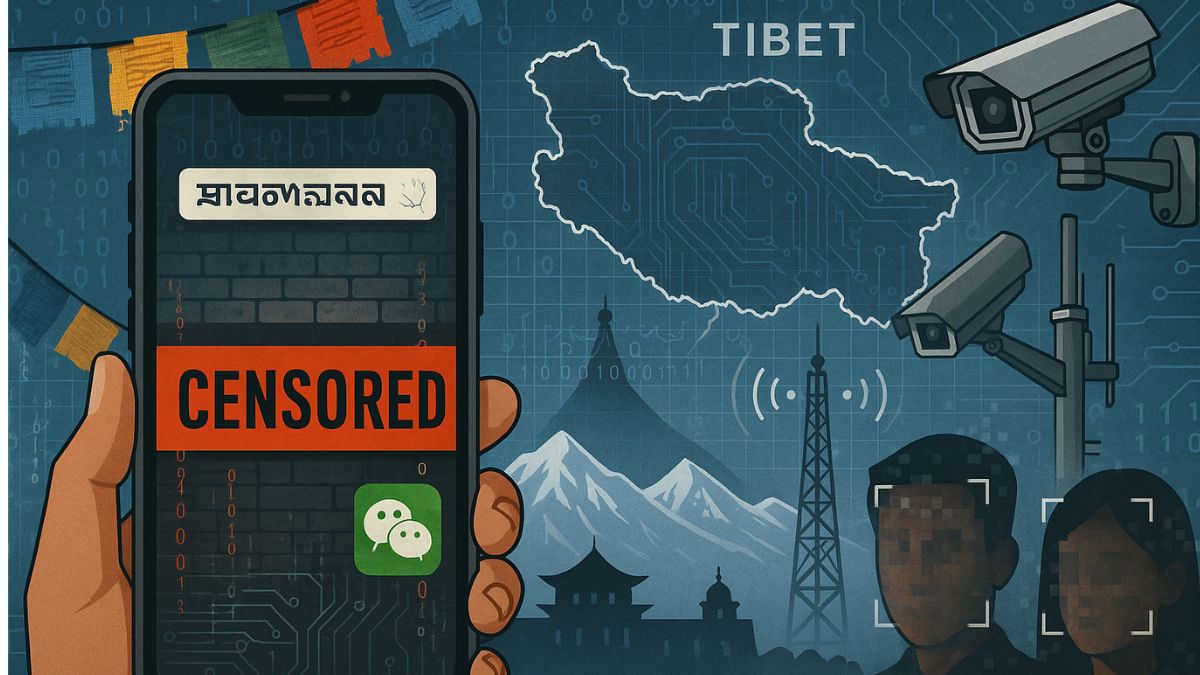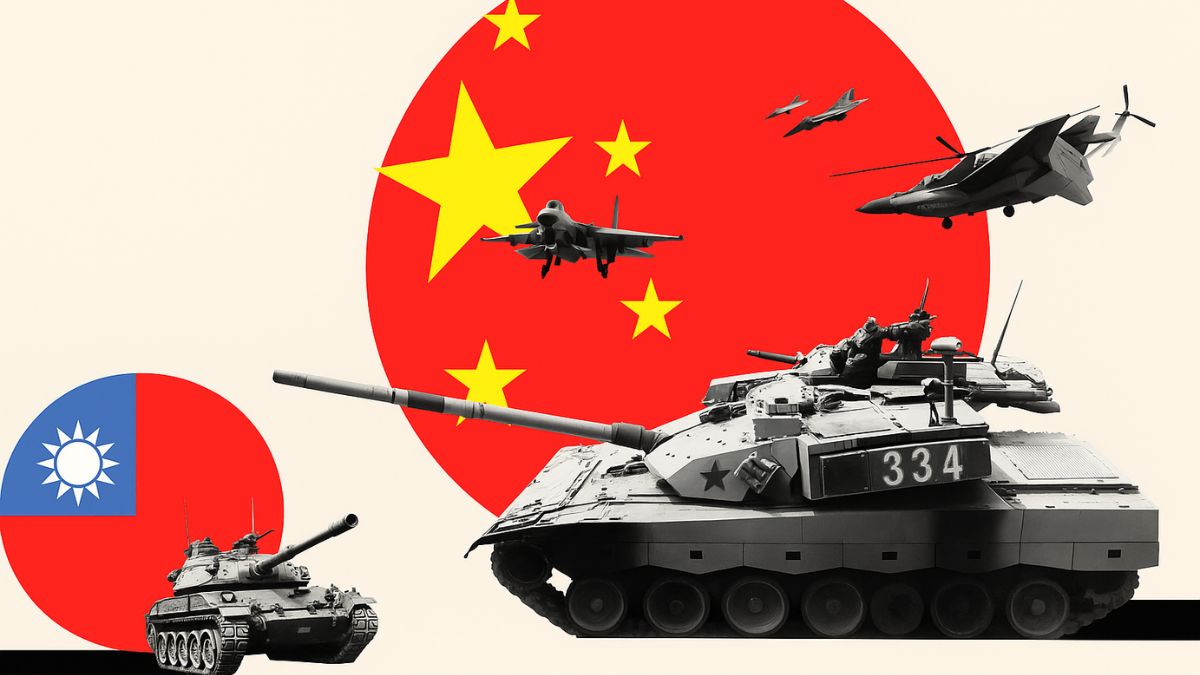How China Is Using Digital Authoritarianism To Silence Tibet

Screens go dark, cameras never blink. In Tibet, internet shutdowns, WeChat monitoring and AI facial recognition turn connectivity into control. Image courtesy: AI-generated picture via DALL-E
The Tibetan plateau, long associated with its monasteries and resilience of tradition, is today marked by a quieter presence silence not of nature but of censorship. Since 2019, Beijing has expanded its arsenal of digital repression, combining internet blackouts, surveillance, and cyber laws to isolate Tibetans from one another and the outside world.
These measures have not only constrained political expression but have also eroded Tibetan cultural identity. By harnessing the tools of modern technology, authorities have turned connectivity into an instrument of control, narrowing the space for language, faith, and dissent.
How are blackouts and censorship affecting daily life?
Internet shutdowns are regularly imposed during politically sensitive moments—the March 10th anniversary of the 1959 uprising, the Dalai Lama’s birthday, or during protests. The 2024 demonstrations against a dam in Derge prefecture saw entire towns cut off, leaving families and communities isolated.
While Chinese authorities boast of near-total mobile connectivity in Tibet, with tens of thousands of base stations and 5G coverage, these very systems are used as levers to impose blackout conditions. Millions can be disconnected at a moment’s notice, their digital lives silenced.
Tibetan-language content online has also come under direct attack. Global platforms remain blocked, while domestic apps such as Douyin and Kuaishou now enforce bans on minority language livestreams. Schools have been shut down, such as the Gangjong Sherig Norbu Lobling in 2024, and corresponding Tibetan-language websites taken offline. What disappears in the physical world is mirrored in the digital realm.
How is dissent being criminalised?
Even small acts carry heavy risk. Posting a photo, joining a group chat, or messaging abroad can lead to arrest. At least 60 Tibetans have been detained since 2021 for alleged phone or internet offences.
Cases include monks sentenced to decades in prison for cross-border contact, a technician jailed for supporting cultural websites, and protestors tracked down through their WeChat activity. The message is clear: digital traces are potential evidence, and everyday communication can be recast as subversion.
What systems of surveillance underpin this control?
Tibet has been carved into monitored grid units, each under state scrutiny. AI-powered facial recognition cameras echo practices already entrenched in Xinjiang. Citizens are required to install state apps granting access to calls, locations, and contacts.
Phone inspections are routine, sometimes in monasteries or public squares, with entire groups detained after checks. Residents are also incentivised to report on each other, with financial rewards reinforcing the sense that no interaction is private. For many, the safest option is silence.
What does this mean for Tibet’s future?
Digital repression extends beyond Tibet itself. Families are pressured because of relatives abroad, and diaspora networks are fractured by fear of reprisals. International rights groups say this deliberate isolation accelerates assimilation, undermining both cultural expression and political resistance.
Freedom House ranks Tibet alongside Xinjiang as among the least free places in the world. Reports of DNA collection from children and the forced enrolment of over a million young Tibetans in Mandarin-only schools underline how technological control is tied to demographic and cultural reshaping.
Though global attention often focuses on Xinjiang, Tibet reveals the same pattern: advanced technology turned towards the suppression of identity. Internet blackouts, censorship, and surveillance form a lattice of control where silence is enforced and memory erased. Unless stronger international pressure emerges, Tibet risks becoming the world’s most invisible case of digital authoritarianism.







